WordPress Member Directory Plugin + Community (CMEDC) - Use Case - Creating Directory Where Users Suggest Experts
Use Case - Creating Directory Where Users Suggest Experts
Note: This guide covers features from
- Pro version of WordPress Member Directory plugin - This document uses version 1.5.7
- Community Add-on
Introduction
The WordPress Member Directory plugin allows you to create a listing of experts, or members.
The Community add-on lets other users (logged-in or not) create and manage said profiles.
Video
Use Case Front-End
Directory
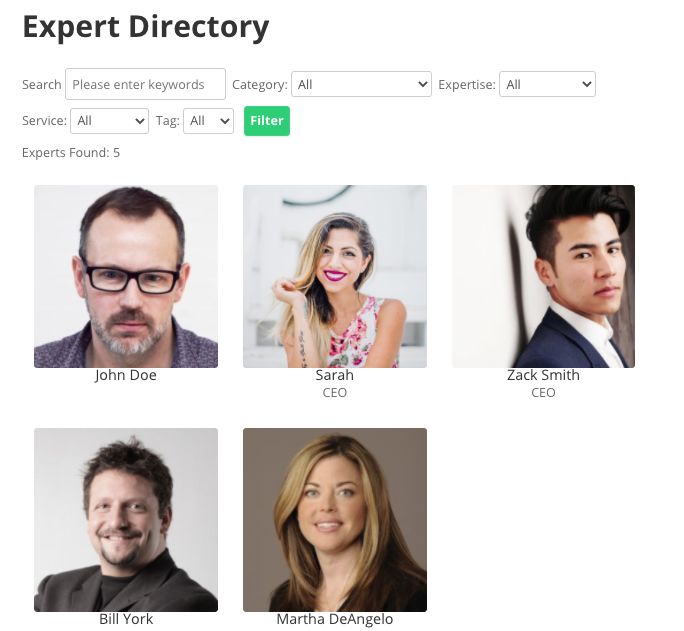
Suggestion Form

Quick Read: How It Works
- When a logged-in user creates an expert, that expert is attached to their account profile. This way, the expert(s) will show up on the user dashboard.
- You can let users claim expert profiles as their own. If approved, the profile will be attached to the user.
- All expert profiles can have login and password. You can enable users (even anonymous) to edit them by inputting these credentials.
Once a non-logged in user submits a new expert, their email is saved and a password is sent once the listing is approved.
This process does not create a WP user associated with the listing. However, it still allows user to update their expert listing information without having any access to the WP dashboard or having any other privileges related to WP users.
Use Case Assumptions
In this example use case guide, we'll cover how to create a directory where users can suggest experts. You can apply the same idea to the topic of your site.
We consider that you have already bought the addon, but not installed it.
It follows:
- Installing the plugin
- Setting up a directory
- Letting users suggest experts
- Moderating submissions
- Creating and modifying the suggest expert form
- User view - How a user can suggest experts
- User view - The user dashboard
- Updating experts
- Notifying users and the admin
- Extras
Installing the Add-on
The process is the same for all CM plugins and addons.

- Download the plugin from your customer dashboard.
- Log in to WordPress and navigate to the WordPress Admin → Plugins settings.
- Click on Add New.
- Activate it and add the license.
Setting up a Directory
First, set up the directory if you haven't done so. Since this article focuses on the community use case, it mostly list the relevant documentation for this first step.
Learn The Basics
WordPress Member Directory Plugin (CMED) - Use Case - Creating an Expert Directory From Scratch
Checking Settings
Navigate to the Admin Dashboard → CM Expert Directory → Settings. Then click on the General tab.

Adding First Expert
Head to CM Expert Directory Pro → Add Expert.
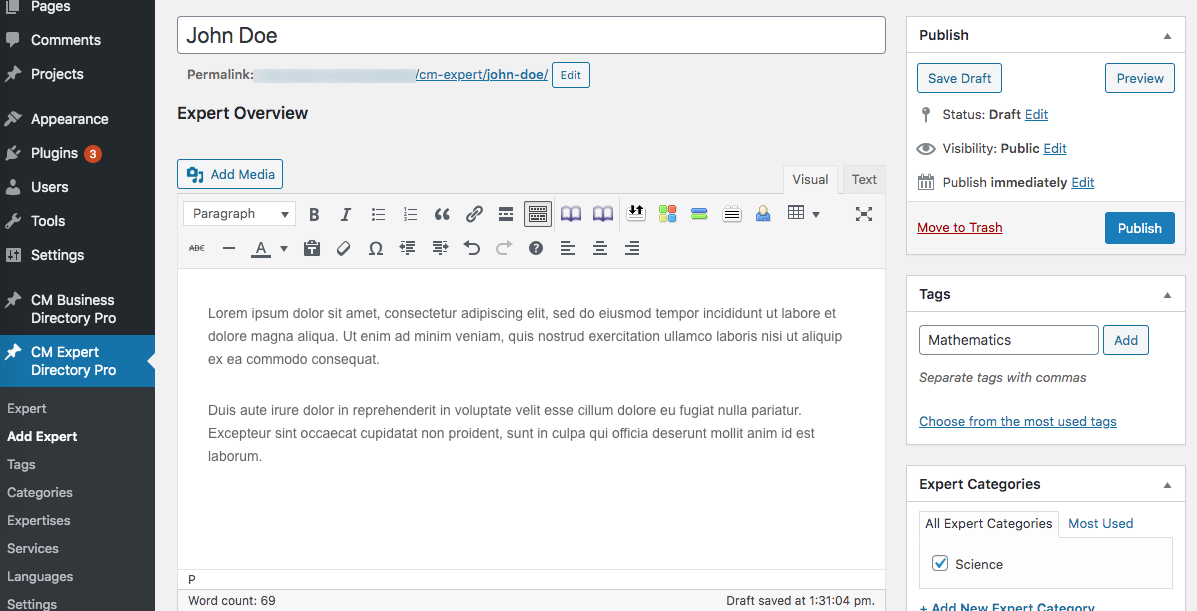
Learn more: WordPress Member Directory Plugin (CMED) - Getting Started - Add Expert
Useful Guides
- General - Set general options for plugin.
- Advertisement - Choose if you want to display advertisements and if so, place ads content in the fields.
- API Settings - Twitter and Google settings.
- Expert Page - Settings for Expert Page. More about Additional Taxonomy, Additional Links/Fields and Star Rating
- Directory Index Page - General settings for Directory Index page and also Filters
- Directory Appearance - Settings for 3 different views: Directory, Tiles and List view.
- Custom CSS - Option to apply your own custom css styles.
- Labels - Customize plugin labels to your needs.
- See Shortcodes list to know what you can change to adjust plugin to your needs.
Letting Users Suggest Experts
With the directory ready, let's allow users to suggest experts.
Navigate to the Admin Dashboard → CM Expert Directory → Settings.
TIP: Most Settings Are Located in This Tab
Most settings related to the add-on are in this tab.

Under moderation settings, choose the roles who can add experts.

Anonymous Users
Letting anonymous users make submissions means visitors who are not logged-in can suggest an expert. It's recommended to only allow this in tandem with moderation and reCAPTCHA
Moderating Submissions
Also here you can enable moderation. This means that, every time someone suggests an expert, the status will be pending until you approve the submission.
There are also notifications related to moderation
Restricted Access Warning
The field "Choose a text to display" will dictate what users without permission will see when trying to suggest an expert. The placeholder [list of roles] can be used to show the allowed roles.
Example:

Creating and Modifying the Suggest Expert Form
Adding Form to the Site
Place the [community_expert_form] shortcode on the page where you want to display the form.

Example
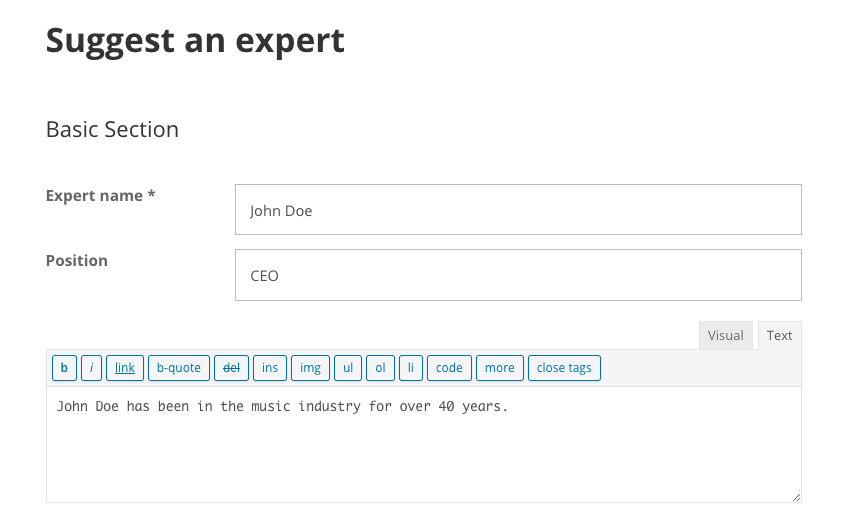
Direct Edit Link - One Expert Per User Mode
If the One Expert Per User mode is enabled, it's possible to create a handy shortcut to edit the expert.
To do so, add the shortcode with the parameter: [community_expert_form self_edit="1"] to a page. Once logged-in users access this page, they will be directed to the edit form of their expert.
So, if the page "site.com/edit-form" has this form, you can add the link to a button to direct users to the form.
Settings
In the settings → Community Expert tab, check the Add a Expert Form section. There are some important settings.

- Suggest an Expert Page ID - Edit the link to suggest a expert form. This can be show up in the expert directory index page.
- "Suggest an Expert Form" - Link to the page with "Suggest an Expert" form. You can click the edit to open the page editor.
Add "Suggest an Expert" link on expert directory index page - Check the box to add a link to the suggest a expert link on the expert directory index page.
Example

'Suggest an expert' link - Maximum number of categories - Set the maximum number of categories that users can assign an expert to. The admin can always add more categories.
TIP: Invite Users!
Be sure to link the Suggest Expert Form in a prominent section of your site so that they easily send submissions.
Editing the Form
The suggestion form is quite flexible. To access which fields are available and required, head to Admin Dashboard → Expert Directory → Settings → Community Experts Labels tab.

Here you can set the label of each field. Some fields have the option to be set as visible and mandatory.

TIP: Translate, Adjust
The add-on has over 40 labels that can be translated.
It's an opportunity to change the interface to your site's language and/or style.
reCAPTCHA For Security
Under Community Expert Tab → Form settings, you can enable reCAPTCHA Captcha.
It will be used on places where the user can submit information. This happens on the add/update a expert and the claim a expert functionality.
Relevant settings:
- Show Captcha - Check the box to secure the form with Captcha.
- Captcha key - Enter the Captcha key in the provided box.
- Captcha secret key - Enter the Captcha secret key in the provided box.
Note: You must provide reCaptcha v2 Invisible keys.
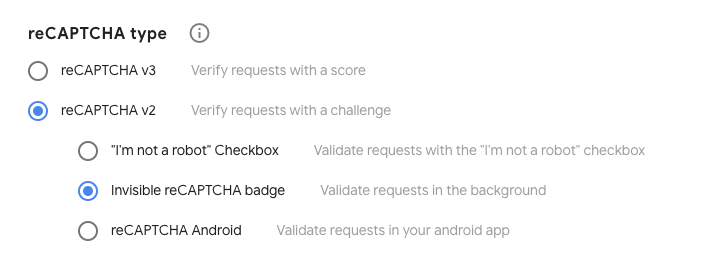
Read more General Support - reCAPTCHA - What is It and How to Enable
User View - How a User Can Suggest Experts
Now, when the user reachers the page with the suggestion form, they will be able to send the data.
The fields and if the suggestions are moderated... it all depends on the settings above.
Example

TIP: Taxonomies, Custom Fields and Custom Links
These fields are only enabled if they have been configured. Note that they have specific labels!
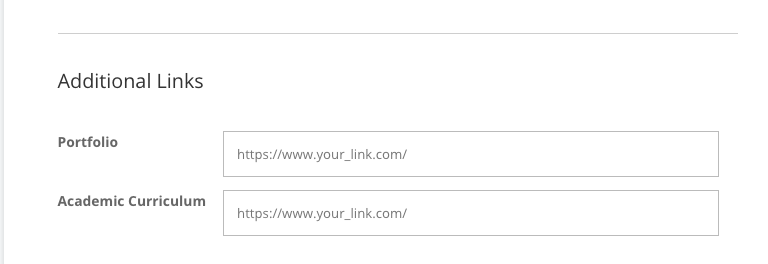
Learn more:
User View - The User Dashboard
You can add a dashboard so that the user can edit the experts assigned to his/her profile.
Example
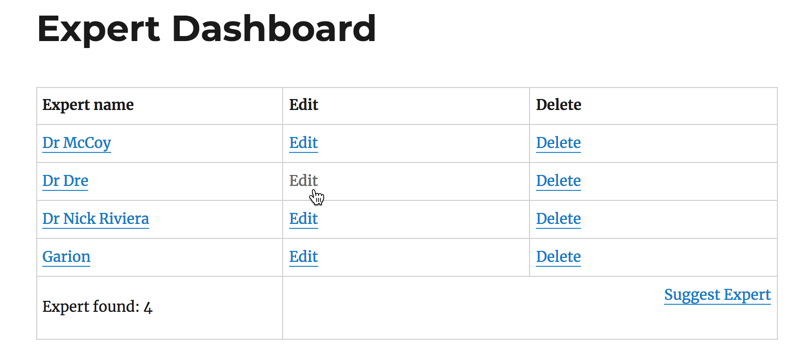
This is done by using this shortcode on any page:
- Shortcode:
[cmedc_dashboard]- Optional Attributes:
show_footer - Input the value "1" to display the footer and "0" to hide it. The footer is the line containing the Expert count and the Suggest Expert link.
Example:
[cmedc_dashboard show_footer="0"]show_header - Set "1" to show the header; set "0" to disable.
Example:
[cmedc_dashboard show_header="1"]edit_on_backend - Set "1" to allow users to access the Back-End editor; set "0" to disable.
Example:
[cmedc_dashboard edit_on_backend="1"]
- Optional Attributes:
TIP: Single Expert Mode
If the single expert mode is enabled, instead of showing a list, this shortcode will direct the logged-in user to his/her expert.
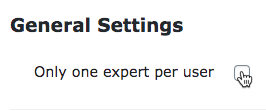
Learn more: CM Expert Directory Community (CMEDC) - Settings
Geo Directory Attribute
geo_directory is a special optional attribute
geo_directory - Set "1" to allow the GeoDirectory integration; set "0" to disable. Add it to the proper GeoDirectory tab. Learn more WordPress Member Directory Plugin (CMED) - Integration With GeoDirection Plugin Example [cmedc_dashboard geo_directory ="1"]
What Happens on Edit?
When a user clicks the Edit button they are redirected to the form containing that expert's details.
The interface is identical to the existing suggestion form.
Notifying Users and The Admin
Now, let's make sure you and your users are notified of important events regarding submission status.
Notifications are used to send an email to the user submitting his expert on the status on the expert page and also to the admin managing the directory. In both cases you can customize the email template and decide it should be sent at all.
You can enable/disable and configure these notifications:
- To the Admin
- User suggests an expert
- User claims expert
- To the User
- Submission was accepted/declined
- Claim rejected
- Information about how to login to an expert profile
TIP: Similar Settings
The settings are similar in all cases. You can enable/disable that specific notification and change the content. In some instances, placeholders such as [url] are accepted.
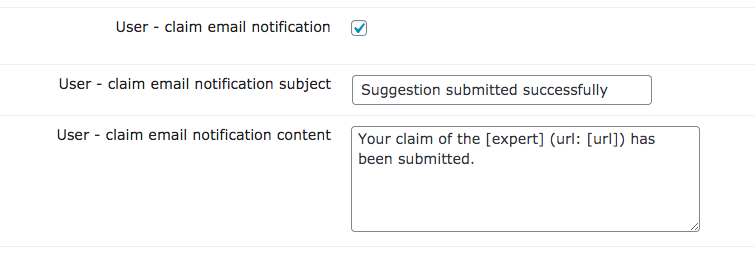
Extra 1 - Granting a User Access to Expert Profile
The admin can verify the owner of an Expert profile in the edit expert page. To enable this, turn on the option "Recovery management" in the Community Expert tab.

Now you will see a meta-box called "CM Expert Directory Community Custom Fields" when editing a profile.
In it, the admin can assign the expert to an email.
If an email address is already set, the admin can view the login and password and also send these credentials to the user, as highlighted.
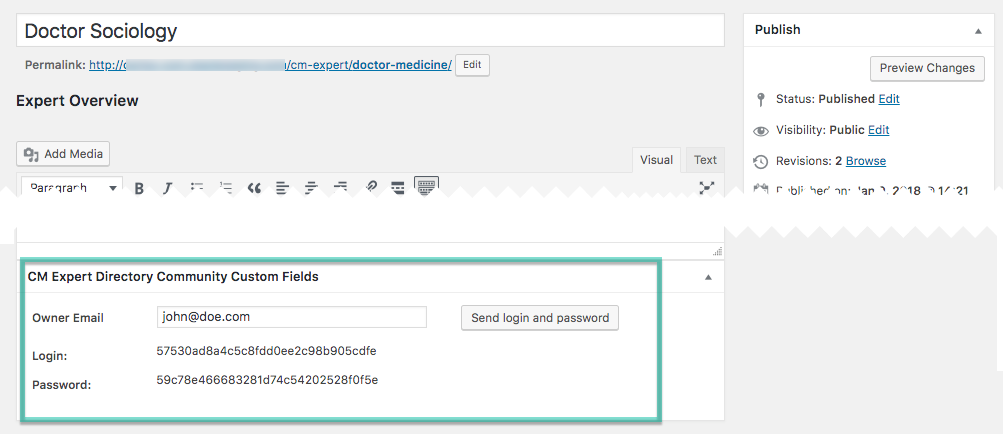
To learn more about, check the specific guide Password Recovery.
Extra 2 - Letting Users Claim Profiles
You can let users or visitors claim expert profiles as their own.
What The User Does (Front-End)
First, the user has to open the Expert Page, toggle Claiming form and send his name and e-mail address to admin.
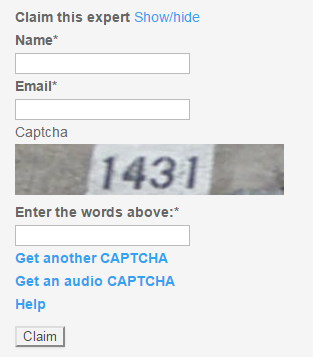
Enabling Claims
Inside the Expert Claim Settings section:
- Claims management - Check the box to allowing experts to be claimed by site users. if this is checked than users can claims existing expert pages which have not been claimed yet. Once claimed an email will be sent to the admin which can accept or reject the claim.
- Login form on expert page - Lets user log in to an expert profile on that expert's page
- Require captcha for claims - Check the box to add reCAPTCHA to secure expert claiming form.
- Allow multiple pending claims for one expert - Check the box to allow multiple claims by one expert. it is advised not to allow multiple claims to prevent human bots.
TIP: How The Admin Manages Claims
From the WordPress dashboard navigate to CM Expert Directory Pro → Settings → Claim Requests.

From here, the admin has an overview of all claim requests.

For each, the admin can accept, reject and delete the request. Finally, it's possible to resend the claim confirmation email.
Learn more: How To - Let Users/Visitors Claim Experts
Recap
With all steps completed, your directory will accept submissions from users via a customized form.
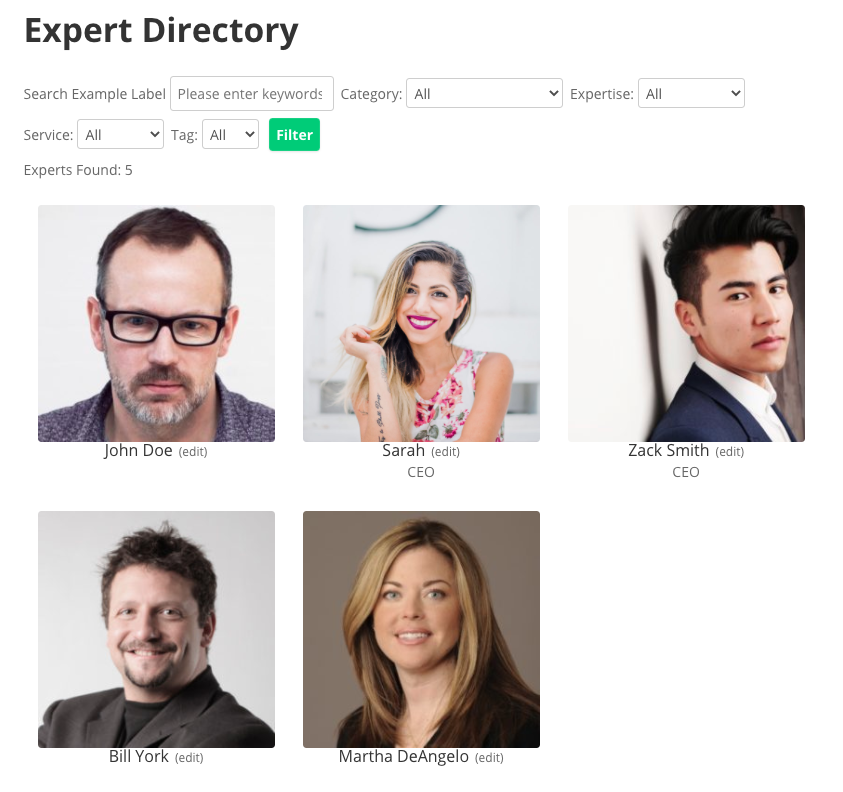
 |
Get more information about the CM Expert Directory Community WordPress Add-on Find other WordPress products at the CreativeMinds WordPress Store |
 |
Let us know how we can Improve this Product Documentation Page Visit our support center to open a Support Ticket |

